Orchids After Blooming: Learn About Orchid Care After Blooms Drop
Knowing how to support orchids after blooming increases your chances of sustained ornamental displays. Here’s how to give the best orchid care after blooms die
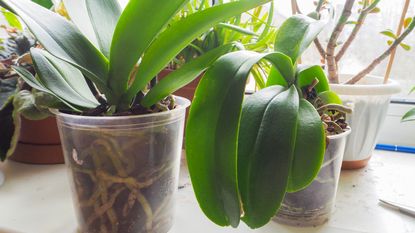

We love our orchids and cherish their delicate flowers, but many of us struggle with orchid care after blooms die. Despite their reputation among the most difficult to care for plants, orchids will grow well indoors. However, continued care for the plant can sometimes be tricky.
This is especially true for gardeners who hope to encourage repeat-bloom. In most instances, subtle variations in growing conditions are the likely culprit when it comes to failure to flower. Learning more about each species’ specific needs can help growers to inspire budding and keep the plants looking their best. Here’s what to do when orchids lose flowers.
Best Orchid Care After Blooms Drop Off
- Watering & Feeding: Continued orchid care after blooms drop is essential to repeat flowering. Consistent moisture is best throughout periods of active growth, with gardeners making certain that the plant’s medium is not allowed to dry completely. In terms of orchid watering requirements, water from below, with the use of shallow trays or saucers. Plants will also appreciate routine fertilization, and will benefit greatly from feeds specifically formulated for use with orchids.
- Container & Compost Care: Established plants may need extra attention in terms of repotting. This can occur when the orchid has outgrown its containers or when roots have become prominent outside of the pot. The presence of surface roots are not a cause for concern, as they are a natural aspect of growth for many species. Still, moving crowded specimens can be helpful in refreshing growing orchid planting mediums and promoting new growth.
- Temperature Control: Orchid care, after blooms die, will require continued regard to temperature. Seasonal variations in temperature will play a key role in the development of orchid flowers. To encourage buds indoors, natural conditions for growth must be simulated. Experienced growers note that decreasing room temperatures for several weeks may aid in this. Ideal temperatures to trigger flower production are said to range between 55-65°F (13-18°C).
- Humidity & Airflow: Proper humidity is a key component in overall orchid health. Moisture levels can be maintained in a variety of ways. While many gardeners choose to mist their plants frequently, others have found success with the use of small greenhouses or humidity domes. Placing potted plants atop small trays filled with pebbles and clean water has been found to be useful.

Stem Removal & Deadheading
As orchid flowers age, most will drop from the plant on their own. Once the orchid dropping blooms has ceased to do so, growers should proceed with caution. Though some species will produce new spikes each bloom cycle, others will rebloom on the current stem. Removal or improper pruning of these types is likely to result in the loss of flowers.
Orchid flower stems may still produce flowers if they are still green. A Phalaenopsis orchid that has finished flowering has the potential to produce another bloom or two, if the stem is healthy and green. If the stem is brown or has begun to soften, cut it off with a sterile instrument to the base. This redirects the plant's energy to the roots. Stems that are healthy on Phalaneopsis orchids after blooming can be cut back to the second or third node. These might produce a bloom from the growth node.
Dormancy & Disease Checks
It is easy to understand why growers may be alarmed when orchid blooms fall off. Checking for disease at this time can help to calm nerves and assure growers that their plants are healthy. In most instances, loss of flowers will mark a beginning period of much-needed dormancy and rest.
Cycles of dormancy vary between species, most commonly lasting between several weeks and months. Though growth has slowed during these times, plants will require consistent warmth and care. Some orchids require a dormant period to form buds, such as Dendrobiums, which need six-eight weeks with minimal water. Cattleya requires cool nights with temperatures of 45°F (7°C) but warm days to form buds. Let the soil dry slightly between waterings, but never allow orchids to completely dry out.
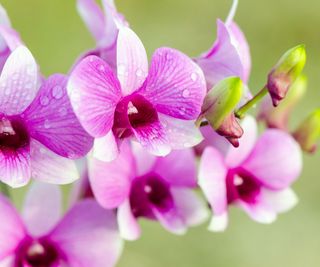
How to Encourage a Second Flush of Flowers
The ultimate goal with orchid care after blooms die is to encourage plants to flower again, and again. You should be able to make orchids bloom again, provided that their required cultural conditions have been met. This includes each species' need for light, temperature, and even dormancy. Some types are much more likely to impress growers with repeated displays. Continuous blooming orchids, or those with especially long sequential bloom periods, are most notable.
Gardening tips, videos, info and more delivered right to your inbox!
Sign up for the Gardening Know How newsletter today and receive a free download of our most popular eBook "How to Grow Delicious Tomatoes."
Caring for orchids after they bloom may mean repotting. Orchids like to be in cramped quarters and only need soil changed when it begins to break down. When repotting orchids, use a good orchid mix with bark, coconut fiber, sphagnum moss and perlite. Be gentle, as damage to roots can be fatal and marring flower shoots can prevent bloom.
Frequently Asked Questions
Can Orchids Bloom All Year Long?
With proper care for orchids after blooming, most plants should be able to continue flowering. Those growing plants with especially long bloom cycles may be able to extend this period, provided that conditions are ideal. Still, most orchids will require rest in the form of either part or full dormancy in order to thrive.
Should Orchid Stems Be Cut After Blooming?
Determining whether or not orchid stems should be cut after blooming will depend upon the species. While some types will produce new flower stalks, others rebloom only from established stems. Though repeat blooming stems can be trimmed back to the nearest bud, healthy spikes should not be removed from the plant.

Tonya Barnett has been gardening for 13 years. Flowers are her passion. She has trasformed her backyard into a cut flower garden, which she regularly chronicles on her YouTube channel http://www.youtube.com/@tonyawiththeflowers.
- Bonnie L. GrantWriter
-
 Grow a Bathroom Oasis: 8 Best Bathroom Plants With No Light or Low Light
Grow a Bathroom Oasis: 8 Best Bathroom Plants With No Light or Low LightSome apartment dwellers grow the best bathroom plants with no light or low light. Read how one of our favorite plant lovers does it in the big city.
By Teo Spengler
-
 "My Worst Mistake" – Gardeners Share 10 Hard-Learned Lessons
"My Worst Mistake" – Gardeners Share 10 Hard-Learned LessonsGardeners never stop learning, and sometimes our mistakes are the best teachers. But why not save time and heartache by learning from other gardeners' failures?
By Melanie Griffiths
-
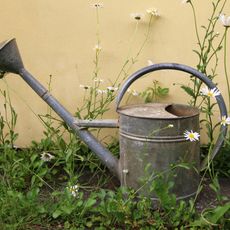 Watering Daisies: How Often To Water Your Sun Loving Blooms
Watering Daisies: How Often To Water Your Sun Loving BloomsWhile it might seem straightforward, there is a knack to watering daisies correctly. We show you how to give your shastas, marguerites and gerberas the best hydration
By Tonya Barnett
-
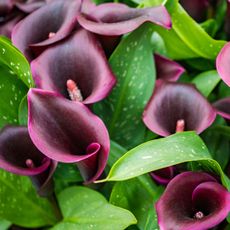 Best Moody Maroon Flowers: 8 Burgundy Blooms For A Moody Garden
Best Moody Maroon Flowers: 8 Burgundy Blooms For A Moody GardenGrowing maroon flowers may not be for the faint of heart, but it is a glorious way to add drama and impact – as well as lure pollinators to your plot. So why not go dark with these eight blooms?
By Tonya Barnett
-
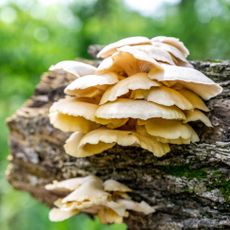 Growing Mushrooms On Logs: 5 Best Mushroom Varieties To Try
Growing Mushrooms On Logs: 5 Best Mushroom Varieties To TryYou’ll find growing mushrooms on logs is simple, enjoyable, safe and tasty – as long as you pick the right kinds! We reveal five of the best for an endless feast of fungi
By Janey Goulding
-
 Begonia Watering: How To Water Begonias (And When To Leave Them Alone!)
Begonia Watering: How To Water Begonias (And When To Leave Them Alone!)Improving the way you hydrate your begonias can have a major impact on their life expectancy and flowering quality. We explain how to get better at begonia watering
By Tonya Barnett
-
 How Often To Water Your Mums For Beautiful, Long-Lasting Blooms
How Often To Water Your Mums For Beautiful, Long-Lasting BloomsWatering chrysanthemums relies in part on whether your plants are in the garden or in a pot, but there is a knack to doing it well. We show you how often to water your mums for the best blooms
By Tonya Barnett
-
 Romantic Rose Varieties To Make Your Heart Flutter: 8 Best Roses For Romance
Romantic Rose Varieties To Make Your Heart Flutter: 8 Best Roses For RomanceRomantic rose varieties are plentiful – but if you are looking for a few of the ultimate selections for love, here are eight of the best rose cultivars you can try
By Tonya Barnett
-
 French Flowers To Add A Touch Of Romance To Any Garden
French Flowers To Add A Touch Of Romance To Any GardenFeeling love-struck is something that French flower enthusiasts have elevated to the level of an art form. Here we consider the most romantic French flowers you can grow
By Bonnie L. Grant
-
 Growing Geraniums In Containers For More Blooms In Small Spaces
Growing Geraniums In Containers For More Blooms In Small SpacesNo matter how small your yard or window space, there’s a place for a potted geranium. Make sure yours last for longer with this guide to growing geraniums in containers
By Janey Goulding